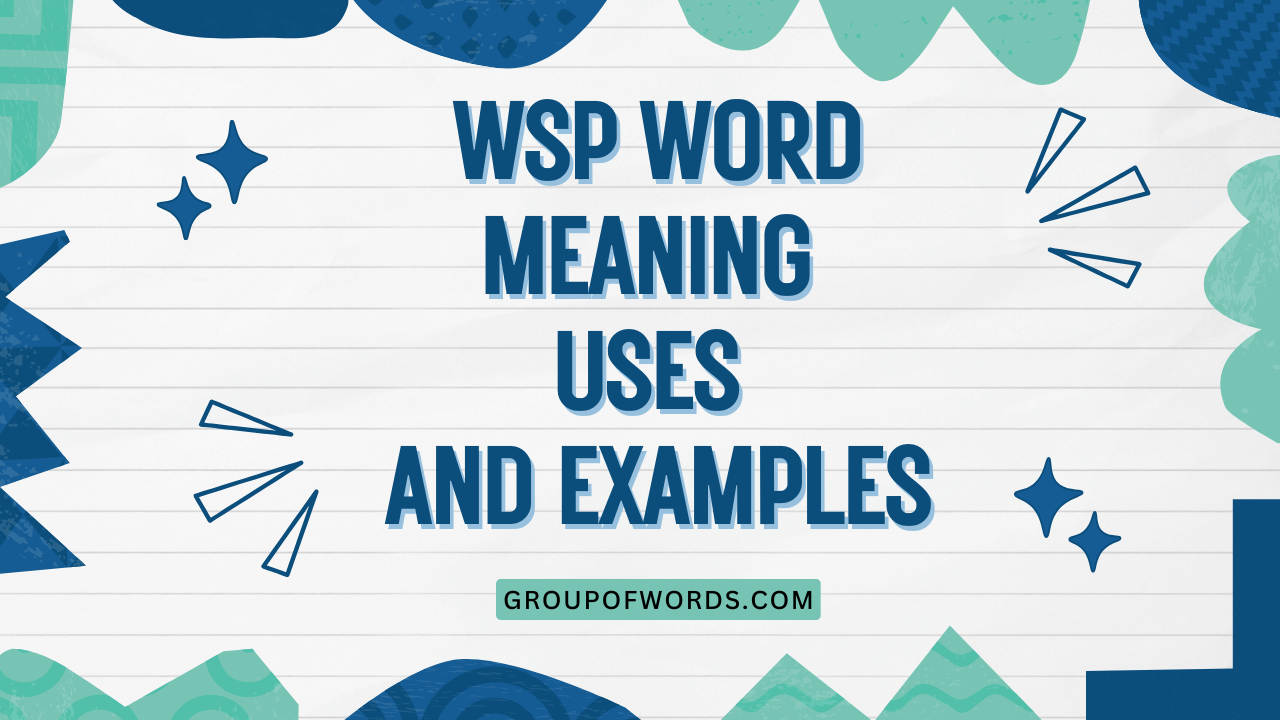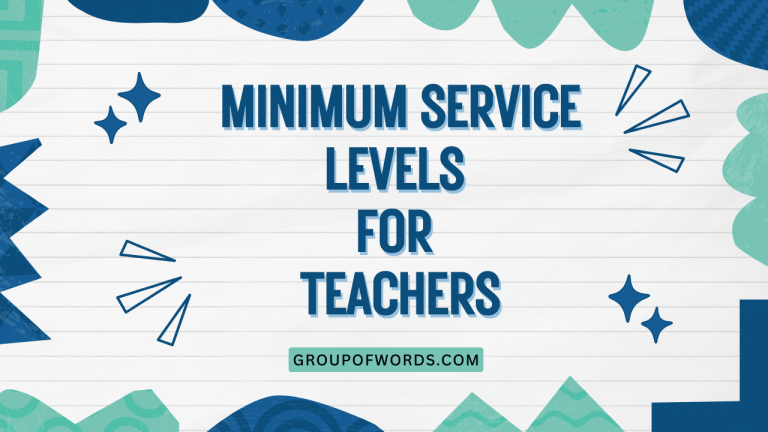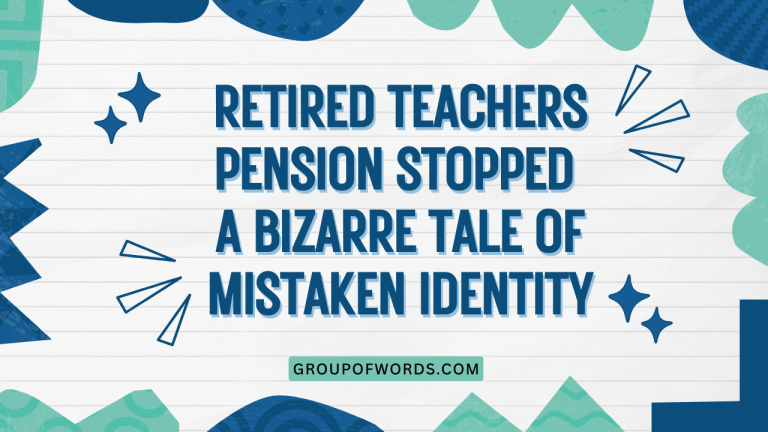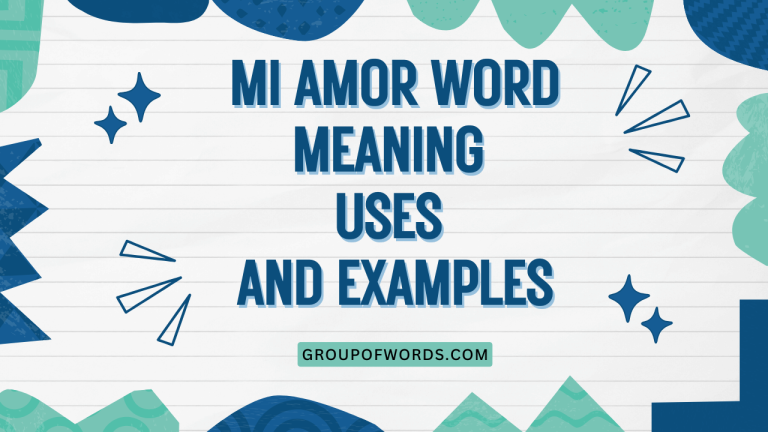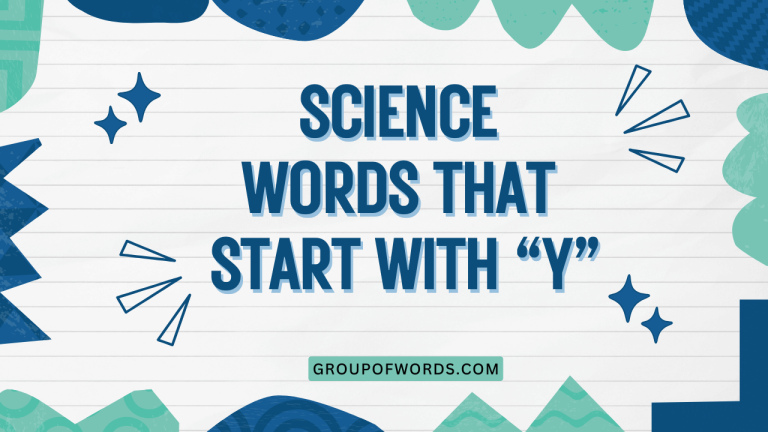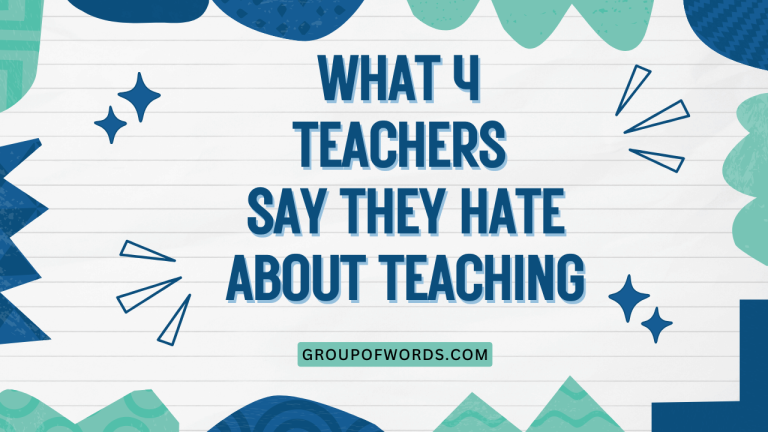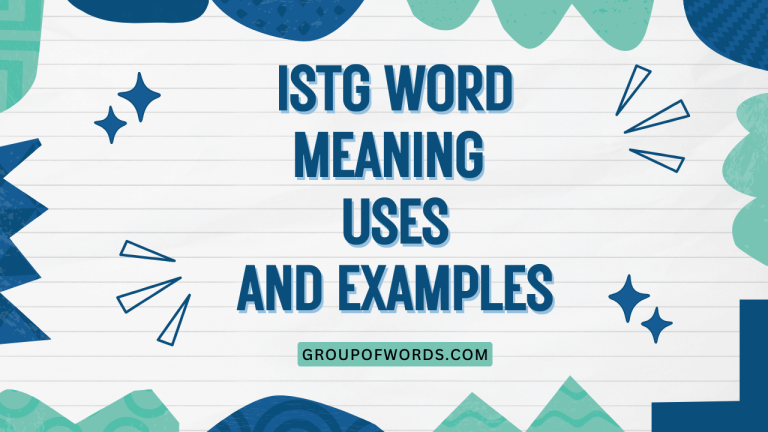Word Meaning, Uses, and Examples: A Comprehensive Guide
Words are the building blocks of language, and understanding their meanings and uses is crucial for effective communication. This article provides a comprehensive guide to understanding how words function within the English language.
It covers various aspects, from defining word meaning and exploring structural elements to providing numerous examples and usage rules. Whether you are a student, a language enthusiast, or simply someone looking to improve your English skills, this guide offers valuable insights and practical exercises to enhance your understanding of words and their usage.
By mastering the concepts presented here, you’ll be better equipped to express yourself clearly and accurately, interpret written and spoken language effectively, and appreciate the nuances of the English language. This guide is designed to be accessible to learners of all levels, offering a structured approach to understanding the multifaceted nature of words.
Table of Contents
- Definition of a Word
- Structural Breakdown of Words
- Types or Categories of Words
- Examples of Words in Sentences
- Usage Rules
- Common Mistakes
- Practice Exercises
- Advanced Topics
- FAQ
- Conclusion
Definition of a Word
A word is a basic unit of language that carries meaning and can stand alone or combine with other words to form phrases, clauses, and sentences. Words are the fundamental building blocks of communication, allowing us to express thoughts, ideas, and emotions. Understanding the definition of a word involves recognizing its form (spelling and pronunciation), its meaning (denotation and connotation), and its grammatical function within a sentence.
Words can be classified based on their function, such as nouns (naming things), verbs (expressing actions), adjectives (describing nouns), adverbs (modifying verbs, adjectives, or other adverbs), pronouns (replacing nouns), prepositions (showing relationships), conjunctions (connecting words or phrases), and interjections (expressing emotions). Each type of word plays a specific role in constructing meaningful sentences.
Structural Breakdown of Words
The structure of a word can be broken down into several components, including:
- Morphemes: The smallest units of meaning in a language. Morphemes can be free (standing alone as words) or bound (attaching to other morphemes).
- Prefixes: Affixes added to the beginning of a word to modify its meaning (e.g., un- in unhappy).
- Suffixes: Affixes added to the end of a word to modify its meaning or grammatical function (e.g., -ing in walking).
- Roots: The core part of a word that carries the primary meaning (e.g., vis in visible).
- Inflectional Endings: Suffixes that indicate grammatical features such as tense, number, or case (e.g., -s in cats).
Understanding these structural elements helps in deciphering the meaning of unfamiliar words and recognizing patterns in word formation. For instance, by knowing the meaning of the prefix “re-” (again) and the root “write,” we can deduce the meaning of “rewrite” as “to write again.” Similarly, understanding suffixes like “-ness” (state of being) allows us to comprehend the meaning of “happiness” as “the state of being happy.”
Types or Categories of Words
Words are categorized into different parts of speech based on their function in a sentence. The main parts of speech are:
Nouns
Nouns are words that name people, places, things, or ideas. They can be common (general names) or proper (specific names). Nouns can also be concrete (tangible) or abstract (intangible).
Examples of nouns include: dog, city, book, love, John, Paris.
Verbs
Verbs are words that express actions, occurrences, or states of being. They are essential for forming sentences and conveying what is happening.
Examples of verbs include: run, eat, sleep, is, are, become.
Adjectives
Adjectives are words that describe or modify nouns, providing more information about their qualities or characteristics.
Examples of adjectives include: big, red, happy, beautiful, intelligent.
Adverbs
Adverbs are words that modify verbs, adjectives, or other adverbs, providing information about how, when, where, or to what extent something is done.
Examples of adverbs include: quickly, slowly, very, often, here, there.
Pronouns
Pronouns are words that replace nouns or noun phrases, avoiding repetition and making sentences more concise.
Examples of pronouns include: I, you, he, she, it, we, they, me, him, her, us, them.
Prepositions
Prepositions are words that show the relationship between a noun or pronoun and other words in a sentence, indicating location, direction, time, or other connections.
Examples of prepositions include: on, in, at, to, from, with, by, over, under.
Conjunctions
Conjunctions are words that connect words, phrases, or clauses, creating compound or complex sentences.
Examples of conjunctions include: and, but, or, so, because, although, if, while.
Interjections
Interjections are words that express sudden emotions or feelings, often used in exclamations.
Examples of interjections include: Wow! Oh! Ah! Ouch! Hey!
Examples of Words in Sentences
The following tables provide examples of different parts of speech used in sentences to illustrate their functions and meanings.
Table 1: Noun Examples
This table provides a variety of sentences using different types of nouns in different contexts, illustrating their usage and function within the sentence structure.
| Sentence | Noun | Type |
|---|---|---|
| The dog barked loudly. | dog | Common, Concrete |
| Paris is a beautiful city. | Paris | Proper, Concrete |
| Love is a powerful emotion. | love | Common, Abstract |
| He read a book. | book | Common, Concrete |
| The teacher explained the lesson. | teacher | Common, Concrete |
| She lives in a small town. | town | Common, Concrete |
| Happiness is important. | happiness | Common, Abstract |
| The car is red. | car | Common, Concrete |
| Time is precious. | time | Common, Abstract |
| The sun is shining. | sun | Common, Concrete |
| John is my friend. | John | Proper, Concrete |
| The computer is broken. | computer | Common, Concrete |
| Friendship is valuable. | friendship | Common, Abstract |
| The house is big. | house | Common, Concrete |
| Hope is essential. | hope | Common, Abstract |
| The bird is singing. | bird | Common, Concrete |
| London is a major city. | London | Proper, Concrete |
| Music is soothing. | music | Common, Abstract |
| The flower is beautiful. | flower | Common, Concrete |
| Peace is desirable. | peace | Common, Abstract |
| The cat is sleeping. | cat | Common, Concrete |
| Rome is historic. | Rome | Proper, Concrete |
| Knowledge is power. | knowledge | Common, Abstract |
| The tree is tall. | tree | Common, Concrete |
| Courage is admirable. | courage | Common, Abstract |
Table 2: Verb Examples
This table showcases various verbs in action within sentences, demonstrating their role in expressing actions, occurrences, and states of being. The examples cover different tenses and forms of verbs.
| Sentence | Verb | Tense |
|---|---|---|
| She runs every morning. | runs | Present Simple |
| They ate dinner. | ate | Past Simple |
| He is sleeping. | is sleeping | Present Continuous |
| We will travel to Europe. | will travel | Future Simple |
| I have finished my work. | have finished | Present Perfect |
| They were playing in the park. | were playing | Past Continuous |
| She had studied before the exam. | had studied | Past Perfect |
| He will have completed the project by then. | will have completed | Future Perfect |
| The dog barks loudly. | barks | Present Simple |
| She sings beautifully. | sings | Present Simple |
| They are dancing at the party. | are dancing | Present Continuous |
| He jumped over the fence. | jumped | Past Simple |
| We visited the museum. | visited | Past Simple |
| I will call you later. | will call | Future Simple |
| She has written a book. | has written | Present Perfect |
| They had left before we arrived. | had left | Past Perfect |
| He is cooking dinner. | is cooking | Present Continuous |
| We were watching a movie. | were watching | Past Continuous |
| I will be studying all night. | will be studying | Future Continuous |
| She had been working there for five years. | had been working | Past Perfect Continuous |
| They will have been living here for ten years next month. | will have been living | Future Perfect Continuous |
| The bird flies high. | flies | Present Simple |
| The baby cries often. | cries | Present Simple |
| The sun shines brightly. | shines | Present Simple |
| She learned quickly. | learned | Past Simple |
Table 3: Adjective Examples
This table illustrates the use of adjectives to describe nouns, adding detail and specificity to sentences. Examples include various types of adjectives and their placement within the sentence structure.
| Sentence | Adjective | Noun |
|---|---|---|
| The red car is fast. | red | car |
| She has a beautiful voice. | beautiful | voice |
| He is an intelligent student. | intelligent | student |
| The big dog barked. | big | dog |
| She wore a blue dress. | blue | dress |
| He is a happy man. | happy | man |
| The old house is historic. | old | house |
| She has a kind heart. | kind | heart |
| The tall tree swayed. | tall | tree |
| He is a brave soldier. | brave | soldier |
| The delicious cake was eaten. | delicious | cake |
| She is a creative artist. | creative | artist |
| The expensive car is new. | expensive | car |
| He is a famous actor. | famous | actor |
| The gentle breeze blew. | gentle | breeze |
| She is a helpful neighbor. | helpful | neighbor |
| The interesting book was read. | interesting | book |
| He is a joyful child. | joyful | child |
| The long road stretched ahead. | long | road |
| She is a modern woman. | modern | woman |
| The noisy crowd cheered. | noisy | crowd |
| He is an optimistic person. | optimistic | person |
| The pretty flower bloomed. | pretty | flower |
| She is a quiet student. | quiet | student |
| The rich man donated money. | rich | man |
Table 4: Adverb Examples
This table presents sentences using adverbs to modify verbs, adjectives, and other adverbs, illustrating how they add detail and context to actions and descriptions.
| Sentence | Adverb | Modifies |
|---|---|---|
| She runs quickly. | quickly | verb (runs) |
| He speaks loudly. | loudly | verb (speaks) |
| The flower is very beautiful. | very | adjective (beautiful) |
| They often visit us. | often | verb (visit) |
| He lives here. | here | verb (lives) |
| She sings beautifully. | beautifully | verb (sings) |
| He works hard. | hard | verb (works) |
| They arrived early. | early | verb (arrived) |
| She smiled sweetly. | sweetly | verb (smiled) |
| He drives carefully. | carefully | verb (drives) |
| They played well. | well | verb (played) |
| She spoke softly. | softly | verb (spoke) |
| He writes clearly. | clearly | verb (writes) |
| They danced gracefully. | gracefully | verb (danced) |
| She listened attentively. | attentively | verb (listened) |
| He answered politely. | politely | verb (answered) |
| They behaved responsibly. | responsibly | verb (behaved) |
| She reacted calmly. | calmly | verb (reacted) |
| He explained thoroughly. | thoroughly | verb (explained) |
| They planned meticulously. | meticulously | verb (planned) |
| She performed exceptionally. | exceptionally | verb (performed) |
| He succeeded remarkably. | remarkably | verb (succeeded) |
| They improved significantly. | significantly | verb (improved) |
| She contributed generously. | generously | verb (contributed) |
| He communicated effectively. | effectively | verb (communicated) |
Table 5: Preposition Examples
This table demonstrates the use of prepositions to show relationships between nouns or pronouns and other words in a sentence, indicating location, direction, time, and other connections.
| Sentence | Preposition | Relationship |
|---|---|---|
| The book is on the table. | on | Location |
| She is in the house. | in | Location |
| He arrived at 5 PM. | at | Time |
| They went to the store. | to | Direction |
| She came from Italy. | from | Origin |
| He is with his friends. | with | Association |
| The letter was written by him. | by | Agent |
| The plane flew over the city. | over | Position |
| The cat is under the chair. | under | Position |
| They walked around the park. | around | Path |
| She sat beside him. | beside | Location |
| He looked towards the horizon. | towards | Direction |
| They argued about the issue. | about | Topic |
| She waited for the bus. | for | Purpose |
| He climbed up the hill. | up | Direction |
| They walked through the forest. | through | Path |
| She lives near the school. | near | Location |
| He stood behind the tree. | behind | Location |
| They met during the summer. | during | Time |
| She worked until midnight. | until | Time |
| He spoke without hesitation. | without | Absence |
| They agreed except for one point. | except for | Exclusion |
| She traveled across the country. | across | Path |
| He succeeded despite the challenges. | despite | Contrast |
| They acted according to the rules. | according to | Rule |
Usage Rules
Understanding the usage rules for different parts of speech is essential for constructing grammatically correct sentences. Here are some key rules:
- Noun-Verb Agreement: Singular nouns require singular verbs, and plural nouns require plural verbs (e.g., The dog barks vs. The dogs bark).
- Pronoun Agreement: Pronouns must agree in number and gender with the nouns they replace (e.g., John likes his car).
- Adjective Order: Adjectives typically follow a specific order: quantity, opinion, size, age, shape, color, origin, material, and purpose (e.g., a small, old, wooden table).
- Adverb Placement: Adverbs can be placed in different positions in a sentence, depending on the emphasis desired. They usually modify the verb directly (e.g., She quickly runs).
- Prepositional Phrases: Prepositional phrases consist of a preposition and its object (a noun or pronoun) and modify other words in the sentence (e.g., The book on the table is mine).
- Conjunction Usage: Conjunctions must be used correctly to connect related ideas. Coordinating conjunctions (and, but, or) connect equal elements, while subordinating conjunctions (because, although, if) introduce dependent clauses.
Exceptions and Special Cases: There are always exceptions to grammar rules. For example, collective nouns (e.g., team, family) can be singular or plural depending on whether they are acting as a unit or as individual members. Irregular verbs have unique forms that must be memorized (e.g., go, went, gone).
Common Mistakes
Many common mistakes arise from misunderstanding the correct usage of words. Here are some examples:
- Incorrect: Their going to the store. Correct: They’re going to the store. (Confusion between their, there, and they’re)
- Incorrect: Its a beautiful day. Correct: It’s a beautiful day. (Confusion between its and it’s)
- Incorrect: Your wrong. Correct: You’re wrong. (Confusion between your and you’re)
- Incorrect: I could of gone. Correct: I could have gone. (Confusion between of and have after modal verbs)
- Incorrect: Who’s car is this? Correct: Whose car is this? (Confusion between who’s and whose)
Avoiding these common mistakes requires careful attention to detail and a solid understanding of the rules of English grammar. Regular practice and proofreading can help identify and correct these errors.
Practice Exercises
Test your understanding of word meaning and usage with the following exercises.
Exercise 1: Identify the Part of Speech
Identify the part of speech of the underlined word in each sentence.
| Sentence | Underlined Word | Part of Speech | Answer |
|---|---|---|---|
| The cat sat on the mat. | cat | Noun, Verb, Adjective, Adverb | Noun |
| She runs quickly. | runs | Noun, Verb, Adjective, Adverb | Verb |
| He is a tall man. | tall | Noun, Verb, Adjective, Adverb | Adjective |
| They arrived early. | early | Noun, Verb, Adjective, Adverb | Adverb |
| The book is on the table. | on | Preposition, Conjunction, Interjection, Pronoun | Preposition |
| She and he are friends. | and | Preposition, Conjunction, Interjection, Pronoun | Conjunction |
| Wow! That’s amazing. | Wow | Preposition, Conjunction, Interjection, Pronoun | Interjection |
| He is my friend. | He | Preposition, Conjunction, Interjection, Pronoun | Pronoun |
| The beautiful flower bloomed. | beautiful | Noun, Verb, Adjective, Adverb | Adjective |
| We will go to the park. | will | Noun, Verb, Adjective, Adverb | Verb |
Exercise 2: Fill in the Blanks
Fill in the blanks with the appropriate word.
| Sentence | Blanks | Options | Answer |
|---|---|---|---|
| ____ going to the beach. | They’re, Their, There | They’re, Their, There | They’re |
| ____ book is on the table. | Your, You’re | Your, You’re | Your |
| ____ a beautiful day. | Its, It’s | Its, It’s | It’s |
| ____ car is this? | Whose, Who’s | Whose, Who’s | Whose |
| I could ____ gone. | of, have | of, have | have |
| ____ house is big. | Their, There | Their, There | Their |
| ____ wrong. | Your, You’re | Your, You’re | You’re |
| He is ____ best friend. | my, mine | my, mine | my |
| The cat is ____ the tree. | under, over | under, over | under |
| She ____ to the store yesterday. | went, gone | went, gone | went |
Exercise 3: Correct the Sentence
Correct the following sentences.
| Incorrect Sentence | Correct Sentence |
|---|---|
| I could of gone to the party. | I could have gone to the party. |
| Their going to the store. | They’re going to the store. |
| Its a beautiful day today. | It’s a beautiful day today. |
| Your wrong about that. | You’re wrong about that. |
| Who’s car is this? | Whose car is this? |
| The dogs barks loudly. | The dog barks loudly. / The dogs bark loudly. |
| She don’t like chocolate. | She doesn’t like chocolate. |
| He have a car. | He has a car. |
| We was at the park. | We were at the park. |
| They is coming to visit. | They are coming to visit. |
Advanced Topics
For advanced learners, exploring more complex aspects of word usage can further enhance their language skills:
- Figurative Language: Understanding metaphors, similes, and idioms adds depth to communication.
- Word Choice and Tone: Selecting the right words to convey the desired tone is crucial for effective writing and speaking.
- Etymology: Studying the origin and history of words provides insights into their meanings and usage.
- Contextual Meaning: Recognizing how the meaning of a word can change based on its context is important for accurate interpretation.
These advanced topics allow learners to appreciate the nuances of the English language and use words with greater precision and creativity.
FAQ
Here are some frequently asked questions about word meaning and usage:
- What is the difference between denotation and connotation?
Denotation is the literal or dictionary definition of a word, while connotation refers to the emotional or cultural associations connected to a word. For example, the denotation of “home” is a place where one lives, but its connotation might include feelings of warmth, comfort, and security.
- How can I improve my vocabulary?
Reading widely, using a dictionary and thesaurus, learning new words in context, and practicing using new words in writing and conversation are effective ways to improve your vocabulary.
- What are some common word usage mistakes to avoid?
Common mistakes include confusing homophones (e.g., there, their, they’re), misusing apostrophes (e.g., its vs. it’s), and using incorrect verb tenses. Proofreading and seeking feedback can help avoid these mistakes.
- Why is context important in understanding word meaning?
Context provides clues about the intended meaning of a word, especially when the word has multiple meanings or connotations. Understanding the surrounding text helps clarify the specific sense in which the word is being used.
- How do I choose the right word for a particular situation?
Consider the audience, purpose, and tone of your communication. Choose words that are appropriate for the context and accurately convey your intended message. A thesaurus can be a useful tool for finding alternative words with similar meanings.
Conclusion
Understanding word meaning, usage rules, and common mistakes is essential for effective communication in English. By mastering the concepts discussed in this guide, learners can improve their reading, writing, and speaking skills, and gain a deeper appreciation for the nuances of the English language.
Continuous practice, attention to detail, and a willingness to learn from mistakes are key to achieving fluency and confidence in word usage. Whether you’re a student, a professional, or simply someone who enjoys language, the knowledge and skills gained from this guide will serve you well in all aspects of communication.
